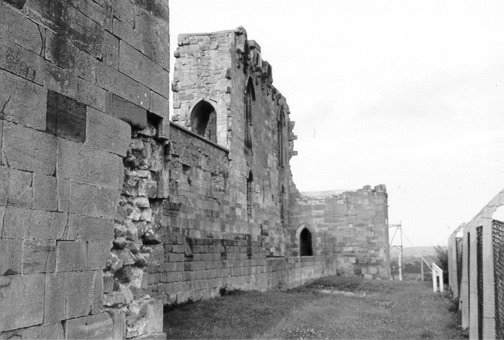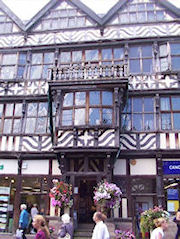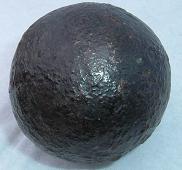A brief gallop through Stafford's past!

There has been a permanent settlement in the Stafford area since around 900-700bc. Iron age man settled here because of its rich mineral deposits and vast forests. Things have changed since then in terms of the surrounding countryside. A large forest still exists to the southeast (Cannock Chase) but the rest consists of mainly farmland, marsh and meadow.
A great deal of Iron-age and Roman evidence survives in Stafford and the surrounding area, however much of Stafford's history between 900bc - 800ad is unknown. In the 9th century, Stafford played a central part in the build up of the pottery industry in the Staffordshire area.
The early 10th century was dominated by the war against the invading Danes. Aethelflaed, the daughter of King Alfred of Wessex fortified the area and held the Danes back. Her success was largely due to the surrounding marshes and dry hills. The marshes later gave name to the town, Staith Ford, 'ford' by a 'staithe' (landing place).

The 11th century (1070) saw William the Conqueror build a fort in Stafford, and he didn't stop there. The surrounding area was dotted with Norman forts and strongholds, this was due to the resistance of the local people against the Normans.

Not much is known from here to the 16th century, Stafford was given a charter, bloomed as a small town for a while, then blended into the dark-ages, as did much of Britain.
The 17th century saw a revival of Stafford. King Charles I visited the town, he stayed at the ancient high house, as did Prince Rupert. The royalist Staffordians held off the parliamentary army for a while but eventually fell in mid 1643. John Bradshaw, the town's parliament minister presided over Charles I's trial and signed his death warrant.

This 2 inch cannon shot was found at Castlefields allotments in 1960, and was given to a W.G.Bagnall apprentice who was passing on route from Castle Engine works to Stafford Castle, half a mile away via the right of way. The shot was of the type used by Cromwell's model army in the civil war when Royalist Stafford surrendered to parliamentary forces on the 16th May 1643, and at this same time Lady Stafford vacated the castle under siege after which the roundheads ordered its destruction.
The 18th century saw Stafford develop as a town of trade and production. A minor pottery industry had developed and a much larger shoe industry flourished. The shoe industry dominated Stafford's industry until the late 19th century and put Stafford on the map as a major Town in England.
The 20th century saw Stafford (along with everyone else) move into the modern era. As the traditional shoe industries died, new and more large-scale industries moved in. These included large scale electrical companies, glue manufacturers, steam industries and wood yards. During the second world war a Stafford company produced tanks and shortly after, a large scale munitions and storage yard was setup for the military.
So what does the 21st century hold ?.. Well Stafford has attracted large computer firms and electronic manufacturers, these include GEC Alsthom and Omega Computing. Traditional companies like Evode, RAF Stafford and GEC still dominate the local workforce, however hi-tech companies have recently been attracted to the newly developed technology park at Beaconside and the town continues to expand.
(Written November 1998)
Footnote: The sections of this article that relate to a 'current' timeline were written in 1998 and were accurate at the time of publishing. The social and economic structure has changed in Stafford since then. This document has been edited only minimally in order to preserve its historical relevance.


